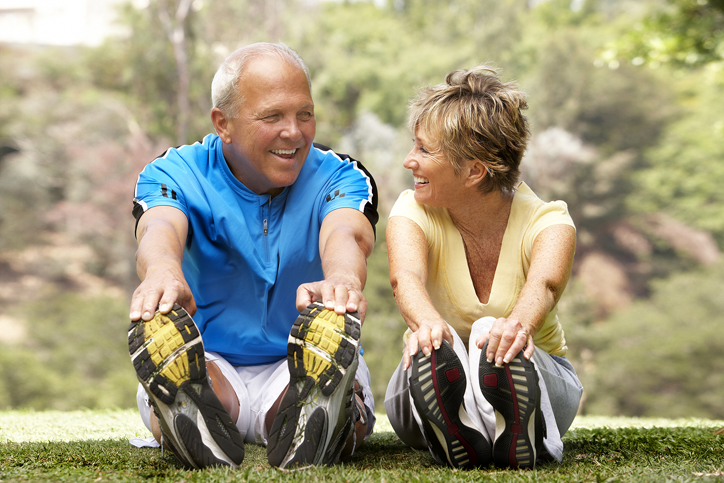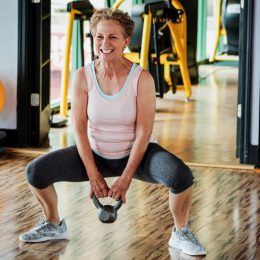5 Signs You Got a Great Workout
Sweat and soreness don’t matter. Here’s what does.

It’s easy to tell if a workout program is working. Just give it time. If you get stronger, improve your stamina, feel less stiffness in your muscles and joints, get more compliments on your appearance, and have a demonstrably higher energy level throughout the day, you know you’re doing something right.
Or if your annual physical shows lower blood pressure or resting heart rate, or improved cholesterol or blood sugar, you can be pretty sure your fitness program had something to do with it.
But how do you know at the beginning of a program if you’re going to end up with all those wonderful results? How do you know if the workout you’re doing right now is worth the time and energy you’re putting into it?
Fortunately, your body has distinct ways to let you know when things are heading in the right direction—both during and after your workouts. Here’s how to read the signs.
During Your Workout
1. You Stand Taller and Move Better
There’s a reason we warm up before doing any serious exercise. One goal is literally to warm up: to raise the body’s core temperature, loosen stiff joints, and make the muscles a little more limber. You’ll also raise your heart rate and in the process increase hormones like adrenaline. Adrenaline, in turn, helps you feel more alert and energetic while opening up blood vessels to deliver more oxygen and nutrients to your muscles.
This combination should help you feel loose and athletic rather than stiff or rigid, says Kevin Mullins, a personal trainer based in Washington, D.C. “It becomes a focus on feeling better and more limber by the end of the session,” he says. At the same time, he expects to see his clients stand taller, with better awareness and control of their posture.
2. You Feel the Pump, and a Bit of the Burn
“I regularly cover the specifics of physical sensations with my patients,” says Aric Sudicky, M.D., a resident doctor in family medicine at Western University in London, Ontario. Dr. Sudicky, who started his career as a trainer and fitness model, tells his patients “there should be signs of effort” when they work out, including a sense that your working muscles are filling up with blood—what bodybuilders describe as “the pump.”
Sometimes you should also feel “the burn.” It’s a slight tingling in your muscles as you reach a point of fatigue, the result of a momentary buildup of metabolic byproducts. They’re flushed away by the extra blood, helping your muscles recover in time for your next set.
If you’re starting a new fitness routine, managing a chronic condition, or recovering from an injury, it’s smart to talk to your doctor about how to exercise safely.
3. You Perform Better
“Being older doesn’t excuse you from training hard,” Mullins says. It does, however, limit how often you can get away with it. If you’re over 60, you can’t crush it for an hour every time you walk into the gym. And that’s okay.
But there should be a few moments of elevated performance in your workouts, Mullins says. You might lift something heavier than you’re used to, or increase the number of repetitions, or move faster, or go longer before fatigue sets in. That’s what breathing harder, moving better, and flooding your body with adrenaline make possible.
After Your Workout
1. You Feel Like You Worked Out
A good workout will leave your heart rate elevated for a couple of hours after you finish. In warmer weather, you’ll probably continue perspiring, too, as your heated-up body now tries to cool down. Perspiration by itself isn’t a sign of a good workout. Nor does lack of perspiration mean you failed. (It has more to do with the weather than the quality of your effort.) You should also sleep a little better that night—an upside of fatigue.
When you wake up in the morning, you may experience stiff joints or muscles at first. As the day progresses, you may begin to feel some discomfort in the muscles you worked hardest. Exercise scientists call it delayed-onset muscle soreness (DOMS). It means you inflicted minor damage on your muscle tissues, and it typically peaks 24 to 72 hours post-workout.
Dr. Sudicky says his patients often ask about DOMS. Some because they’ve experienced it, some because they’re worried about it, and others because they want more of it. He tells the latter group that soreness isn’t necessary for success.
Still, it’s understandable that some of them think it must be. Muscle damage forces your body to adapt to the challenge that made you sore; those adaptations include getting stronger and more resilient. But the fact you’re not getting sore in subsequent workouts doesn’t mean your muscles aren’t continuing to adapt.
Subscribe to our newsletter
It's quick and easy. You could be one of the 13 million people who are eligible.
Already a member? Click to discover our 15,000+ participating locations.
Follow Us
2. You Move More, and You Move Better
While a little soreness is acceptable and even normal when you’re starting a new program, learning new exercises or increasing the effort you put in should never be debilitating. “You shouldn’t be stuck in your chair or unable to participate in normal activities,” Mullins says. “If anything, regular exercise should provide more energy.”
Energy in this context means several different but related benefits. A workout program will improve your ability to store fuel within your muscles and also increase their strength and endurance. At the same time, a well-designed program will improve your movement skills.
“You should feel as though you’re starting to re-master movements and regain control of your body,” Mullins says. You should also feel lighter, no matter what the number on the scale says, since the trifecta of strength, endurance, and improved balance means that each step now takes less effort and feels more natural.
Those things won’t happen overnight, but with time you’ll notice a big difference. You’ll learn how hard you can push yourself in a workout—without feeling wiped out or being excessively sore a day or two later. You’ll move more on the days in between workouts because you feel so much better doing it.
If you do push yourself too hard one day, take it easy for a few days by walking or stretching but skipping your normal routine. Or try self-massage to ease leg pain.
When you’re ready to try again, scale back your workout. For example, lift a lighter weight, or do fewer reps. If that feels better, this might be a better routine for you. When that feels too easy, you can add more weight or reps.
Lou Schuler is an award-winning journalist and author and also a certified strength and conditioning specialist. His latest book is The Natural Way to Beat Diabetes, which he wrote with Dr. Spencer Nadolsky.




